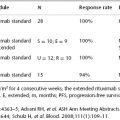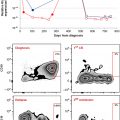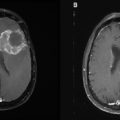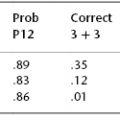Autologous Hematopoietic Cell Transplantation in Multiple Myeloma
1French National Cancer Institute, Nantes, France
2University Pierre & Marie Curie, Paris, France
1. Is high-dose therapy plus autologous stem cell transplantation superior to conventional chemotherapy?
The concept of high-dose therapy (HDT) plus autologous stem cell transplantation (auto-SCT) was developed in the 1980s. The objective of auto-SCT was to support HDT in order to reduce the duration and toxicity of severe myelosuppression The Intergroupe Francophone du Myeloma was the first to conduct a randomized trial showing the superiority of HDT–auto-SCT compared with conventional chemotherapy in patients younger than 65 years of age, as regards response rate, event-free survival (EFS), and overall survival (OS). These findings were confirmed 7 years later by a larger study by the British Medical Council Research VII trial. Following these results; HDT–auto-SCT has become the standard of care in patients who are without severe comorbidities and younger than 65 years of age.
Overall, seven randomized studies have compared auto-SCT–HDT with conventional chemotherapy. While EFS was superior with HDT–auto-SCT in five out of seven trials, OS was significantly prolonged in only three trials. These results were confirmed by a meta-analysis that showed a significant benefit for HDT–auto-SCT in terms of EFS, but no benefit in terms of OS. This was partly explained by the impact of auto-SCT at relapse in patients initially treated with conventional chemotherapy. Therefore, the majority of myeloma experts recommended HDT–auto-SCT as part of initial therapy, whereas some experts considered that delayed auto-SCT (discussed later in this chapter) was a valuable approach. Overall, the use of HDT–auto-SCT was the major cause of OS improvement observed in younger patients before the introduction of novel agents (immunomodulators and proteasome inhibitors). However, in the vast majority of patients, relapses ultimately occurred and long remissions (and possible cures) were rare.
2. What is the optimal conditioning regimen prior to auto-SCT?
The first HDT regimen was the combination of intravenous (IV) high-dose melphalan (HDM) (140 mg/m2) plus total body irradiation (TBI). In a randomized trial from the IFM, HDM alone at a dose of 200 mg/m2 was superior to HDM plus TBI. Therefore, thus far, HDM 200 mg/m2 is the most widely used regimen. However, to improve the efficacy of the HDT and auto-SCT results, several procedures were tested. Different groups have explored the use of combination HDT conditioning regimens using agents in addition to or replacing HDM. Recently, the Spanish group tested a combination of oral or IV busulfan combined with HDM. Unfortunately, better chemoreduction was associated with higher toxicity. The use of bortezomib in conjunction with high-dose melphalan proved to be safe, with nonrandomized data suggesting improved efficacy. However, until randomized results become available, HDM 200 mg/m2 should remain the standard HDT prior to auto-SCT.
3. What is the best stem cell mobilization procedure prior to auto-SCT?
Hematopoietic stem cells (HSCs) usually circulate in only small numbers in peripheral blood (PB). Current mobilization strategies vary between centers, and some patients are unable to mobilize sufficient PB stem cell (PBSC) yields. The most widely used minimal cutoff for autologous HSCs to be infused is 2 × 106 CD34+ cells/kg recipient body weight. However, a significant amount of data suggests that a dose of 4 × 106 CD34+ cells/kg is likely to be an optimal dose in terms of hematopoietic recovery. At present, there is no well-established evidence demonstrating a correlation between an autologous HSC dose and disease outcome. Monotherapy with granulocyte colony-stimulating factors (G-CSFs) is the most commonly used steady-state mobilization strategy. Currently, the G-CSF cytokines—filgrastim and lenograstim—are approved for the mobilization of autologous HSC. The recommended schedules are filgrastim 10 μg/kg/day for 4–6 consecutive days; apheresis to be performed on days 5 or 6; lenograstim 10 μg/kg/day for 4–6 days; and apheresis to be performed between days 5–7. Mobilization with cytokines alone is well tolerated, but their use can be limited by suboptimal PBSC yields. Adding chemotherapeutic agent(s) to cytokine therapy (aka the “chemomobilization” procedure) may increase PBSC yields and can potentially decrease the tumor burden. However, the time required to collect PBSCs is prolonged and becomes less predictable. Also, the incidence and severity of side effects with chemotherapy plus G-CSF are increased compared with G-CSF alone. The approved filgrastim and lenograstim doses for PBSC mobilization after myelosuppressive chemotherapy are 5 μg/kg/day each, starting within 1–5 days after completion of chemotherapy until the last apheresis. The most commonly used chemotherapy-based mobilization in myeloma relies on the use of high-dose cyclophosphamide (usual doses range from 2 to 4 g/m2). The mobilization strategies can be optimized by different approaches: (i) remobilization with a steady-state approach, (ii) change in the chosen chemomobilization approach, or (iii) addition of new mobilization agents such as plerixafor. Plerixafor is a chemokine receptor 4 (CXCR4) antagonist that disrupts the interaction between the stromal deriving factor 1 (SDF1) and CXCR4, thereby enhancing the HSC mobilization effect of G-CSF. Plerixafor has been approved for the use in combination with G-CSF for autologous HSC mobilization in myeloma and lymphoma patients. The recommended dose is 240 μg/kg body weight/day approximately 6–11 hours prior to apheresis initiation following 4 days of G-CSF.
4. Which patients are candidates for auto-SCT?
Most randomized trials have included patients up to 65 years of age. Usually, auto-SCT is indicated for patients aged younger than 66 years with no severe comorbidity. Two clinical conditions may be discussed.
Patients over the age of 65. Auto-SCT is feasible in selected patients older than 65 years of age. However, results of published studies are obviously biased by selection criteria. Few randomized studies have included patients older than 65 years of age. In these studies, the doses of melphalan were reduced compared to those used in younger patients (100 mg/m2 instead of 200 mg/m2), but the transplant procedure was repeated twice (tandem transplants). In the Italian study, two courses of melphalan 100 mg/m2 plus auto-SCT were superior to the standard chemotherapy regimen of melphalan–prednisone (MP). But the IFM group failed to confirm this result and showed that this approach was inferior to the combination of MP plus thalidomide. Therefore, in Europe, auto-SCT is rarely proposed in patients older than the age of 65.
Renal impairment. Although auto-SCT is feasible in patients with renal failure, toxicities of HDT are more frequent and more severe, and the doses of melphalan should be decreased. Patients with renal failure at the time of auto-SCT are currently excluded from auto-SCT programs, because no randomized trial has been performed in this context. However, renal impairment at presentation does not necessarily mean that auto-SCT will be contraindicated after induction therapy.
5. What is the objective of auto-SCT?
Compared to conventional-dose chemotherapy, HDT–auto-SCT improves the response rate and most importantly increases the complete response (CR) rate. In the context of HDT–auto-SCT, a significant relationship between CR or at least very good partial response (VGPR) achievement and the outcome has been clearly shown. Patients achieving CR have a longer progression-free survival (PFS). Therefore, the objective of HDT–auto-SCT has been to increase the CR rate. In the absence of new treatments, in the 1990s, the only possibility was to further increase dose intensity by developing the concept of double intensive therapy. Three randomized trials have shown a benefit in favor of double auto-SCT in terms of PFS, but two of them failed to show an OS benefit. The introduction of new agents (immunomodulators and proteasome inhibitors) in frontline regimens without HDT–auto-SCT has changed the scenario and raises the question of the place of HDT–auto-SCT in front-line therapy of multiple myeloma (MM). First, when combined with conventional-dose chemotherapy in elderly patients, these agents have been associated with high response rates as well and with CR rates that are comparable to those achieved with HDT–auto-SCT for younger patients. Second, these new agents have also been used in combination with HDT–auto-SCT with the objective of further increasing the CR rate and/or of upgrading the CR level. The addition of novel agents after and/or before HDT–auto-SCT has dramatically increased the post-auto-SCT CR rate (>40%) and the CR plus VGPR rate (> 60%). Maybe more importantly, the level of CR have been upgraded with the achievement of stringent CR(s-CR) with a normal k/l ratio (serum free-light chain assessment), immunophenotypic CR (with negative multiparameter flow cytometry), or even molecular CR. Achievement of immunophenotypic or molecular CR has been associated with longer PFS and might become a new objective of modern treatments with novel agents plus HDT–auto-SCT.
6. What is the best induction treatment prior to auto-SCT?








